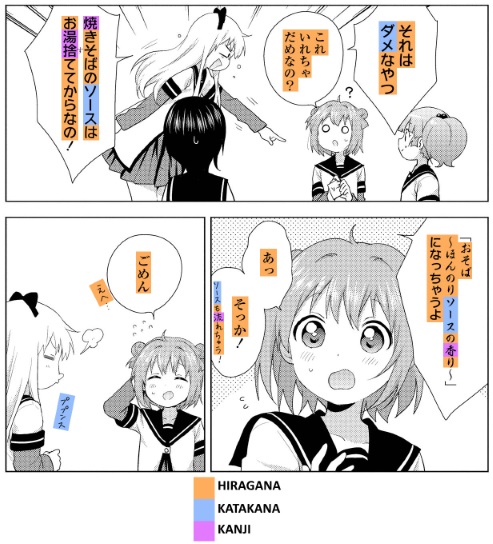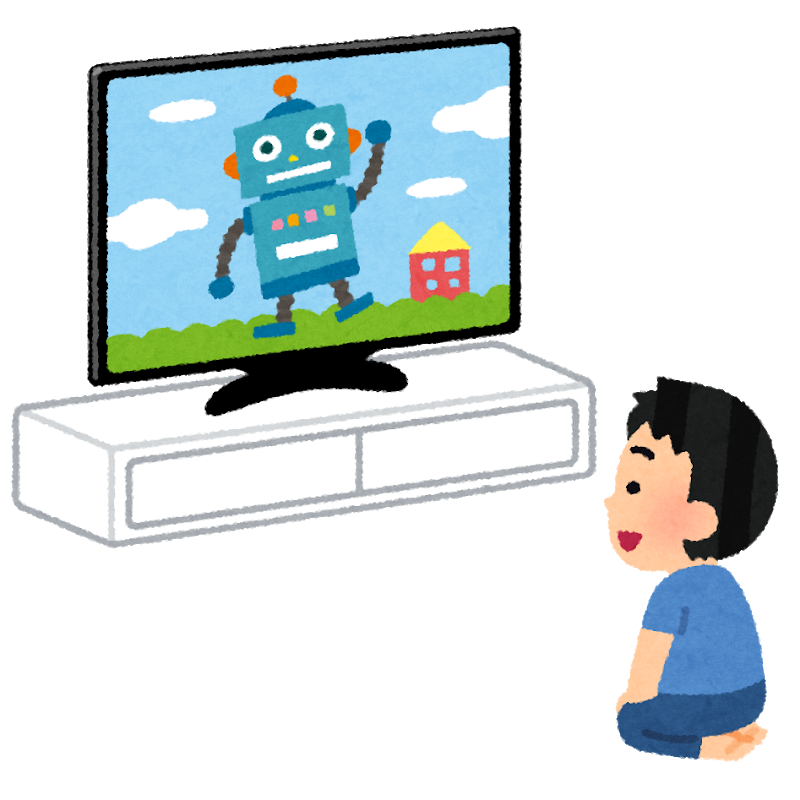A Guide to Learning Japanese¶
This page outlines the essential steps for learning Japanese. These steps are divided into three main sections:
1. First Steps¶
Learn Hiragana and Katakana¶
Japanese uses three writing scripts. Fortunately, hiragana and katakana can be learned in a week or less, and mastering them should be your first priority. Whether you use mnemonics, Anki, or rote memorization isn't as important as avoiding getting bogged down at this stage. Don't strive for perfection; aim to move forward. Hiragana and katakana will be reinforced through exposure to written Japanese, and true mastery comes with practice in meaningful contexts.
Recommended tools:
- Kana recognition tool. Listen to the audio for correct pronunciation.
- Kana recognition Anki deck with mnemonics. If you're new to Anki, see the Anki section for setup instructions. You can also create a new card type for writing practice.

Maximum time for this section: 1 week¶
2. Building the Foundation¶
Work on all steps in this section concurrently. Avoid focusing on one to the exclusion of others.
Use a Core Vocabulary Anki Deck¶
Using a core deck is a good way to learn the most important words early on. The specific deck you choose isn't crucial, as most core decks are similar. However, consider these points:
- Choose a deck with no more than a few thousand cards. It's important to avoid spending too much time on core decks and move on to mining (explained later). This won't happen if you're using a Core30k deck.
- Ensure the cards have audio. You'll need extensive auditory input to truly grasp Japanese sounds. A core deck with native Japanese audio is a good starting point.
Recommendations:
- Kaishi 1.5K. A modern, actively maintained, small core deck. It's an improvement over older Core2k/6k/10k decks and offers some customizability. See GitHub.
- Improved Core 2.3K. A modified version of the popular Core6k deck with improvements, but somewhat outdated and not actively maintained. For beginners, I recommend the Kaishi deck.
Understand Basic Japanese Grammar¶
The best way to learn grammar is through reading and listening, observing its usage until it becomes natural. Grammar isn't a long-term issue; you'll acquire it by consuming content. However, don't assume that content consumption alone is sufficient. Active engagement, such as looking up unfamiliar elements, is essential for comprehension. Therefore, familiarize yourself with basic Japanese grammar using simple sentences and explanations. Avoid tedious conjugation exercises and memorizing every function of each grammar point.
Recommendations:
- DoJG Deck. This deck covers the grammar points in A Dictionary of Japanese Grammar (reference). Despite being called a "dictionary," it only covers essential grammar. Styling recommendation: Core Sentence.
- Tae Kim's Grammar Guide. Praised for its simplicity. Skip the exercises and focus on understanding the explanations. While the author's Japanese level has been questioned and some sentences may be slightly unnatural, it's a good grammar primer.
- Imabi Grammar Guide. The opposite of Tae Kim's guide. The author is knowledgeable and ensures accuracy, but the guide is dense, linguistically heavy, and contains redundant information, making it unsuitable as a grammar primer. Use it as a reference, though you'll likely be able to research most things in Japanese soon.
(Optional) Isolated Kanji Studies¶
You'll learn to read Japanese by using a core deck, consuming content, looking up words, and mining. However, some find it hard to learn Japanese words with kanji immediately. Isolated kanji study involves associating kanji with English meanings using mnemonics. This can make it easier to remember word meanings by grasping the semantic hint of the kanji. However, this approach requires memorizing information not directly relevant to knowing Japanese. Decide for yourself whether it's worth the time investment.
Possible resources:
- KKLC (Kodansha Kanji Learner's Course) (find it here). It provides mnemonics for all kanji, and the meanings are closer to the original Japanese ones than RTK's. Focus on the keyword, not the vocabulary (learn that through core and mining), and don't be too critical of yourself. A complementary Anki deck is available here. If it becomes frustrating, prioritize other points.
- RTK (Remembering the Kanji) (also here). Outdated and esoteric keywords. It doesn't have mnemonics for all kanji, but the community supplements them. The ordering is more questionable than in KKLC. I don't particularly recommend it, but it's popular.

Regardless, don't focus on writing at this stage. There are better ways to learn writing. See the writing section of this site.
Regularly Consume Japanese Content¶
The only way to truly learn a language is through massive input. You'll get input every time you interact with the language, but media consumption is the most efficient method. Whether you watch anime or YouTube, listen to audiobooks or podcasts, or read books, consistent effort yields results. Make an effort to comprehend as much content as possible through lookups. Listening to what is essentially white noise while using your phone won't lead to improvement. Start consuming Japanese content now and balance looking things up with ignoring them, so you learn new things without getting bogged down.
I recommend anime with Japanese subtitles as easy content at this stage. See the Yomitan and anime section for ways to easily look things up and possibly mine.

Recommended time for this section: 6-12 months¶
3. Finale¶
Create Your Own Mining Deck¶
A mining deck is a custom Anki deck that you create using the Japanese you encounter daily. Transitioning from pre-made decks to custom decks is vital. Don't get stuck on pre-made decks. At this point, you're learning directly from material relevant to you and targeting gaps in your knowledge. See the following sections for a complete guide on mining.
Interact with Japanese as Much as Possible¶
There are no limits to what you can do. Engage with Japanese as much as you can. If you feel proficient enough, you can stop using the mining deck.